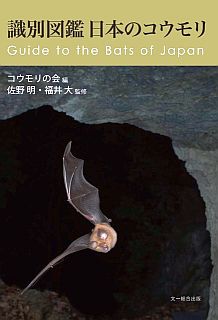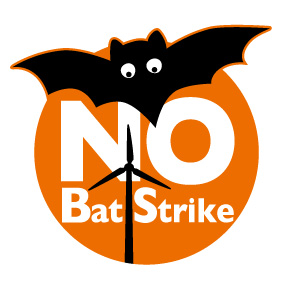

![]() Bat Study and Conservation Group of Japan
Bat Study and Conservation Group of Japan
Bat Study and Conservation Group of Japan(BSCJ) was established in 1992 by researchers who were concerned with the conservation of bats. The group initially consisted of 45 members, but we now have 350 members as of April 2015. We are devoted to bat conservation and research. We hold a bat festival every summer. We issue bat news once a year and have published two books on bats. We raise money for bat conservation through donation and the sales of postcards and other itemes. We have also created guidelines for Bat Watching.
Anyone interested in bats can join us.The 30th Bat Festival will be held in Norikura highland, Nagano Prefecture on 27th and 28th June, 2026.
A new bat book has just been published, Guide to the Bats of Japan

Supervised: Akira Sano and Dai Fukui
Editors: Bat Study and Conservation Group of Japan (Yushi Osawa, Keiko
Osawa, Akiyoshi Sato, Akira Sano, Dai Fukui, Akiko Mikasa, Masahiko Mizuno,
Sachiko Yasui)
Price: 4,950 yen (tax included)
A5 size, 240 pages (all in color)
This book describes all 39 species of bats in Japan, including 37 extant
species plus two extinct species. Compared to A Field Guide to the Bats
of Japan Revised Edition, published in 2011, it has more photographs and
pages (88 pages ¨ 240 pages) with new findings and research records. Each
bat species was described with an ecological and morphological characteristics,
specimen photographs, distribution maps, and photographs of skulls and
skeletons that clearly show the shape of teeth, which are the key to identification.
It is the best guide to bats in Japan.
Complete list of references of the book is here. ixlsx file, 295KBj
 About bats and wind turbines
About bats and wind turbines
The impact of wind turbines on the environment is becoming a big concern
in Japan. At the moment we don't have a proper bat research manual due
to the lack of basic bat information and funds. Particularly, we know nothing
about the migration routes of bats which have a long-distance seasonal
move. As a first step to address this issue, we have translated "Guidelines for consideration of bats in wind farm projects Revision 2014
EUROBATS Publication Series No.6" into Japanese. We are going to develop national guidelines based on this.
"BATS AND ONSHORE WIND TURBINES: SURVEY, ASSESSMENT AND MITIGATION 2019" is a UK guideline on Wind Turbines survey, assessment and mitigation.
BSCJ have translated this into Japanese.
BSCJ submitted a written statement concerning the building of Tenjin-maru Wind Farm in a beech forest in Tokushima Prefecture in Shikoku to the Minister of the Environment and the Minister of the Economy, Trade and Industry.
Nyctalus furvus is endemic to Japan and listed EN in the Red List 2019 by Ministry of
the Environment and VU in the IUCN Red List.
Only recorded sporadically in several prefectures in Honshu. 27 individuals
have been caputured until recentry but last year (2018) a new record was
reported in Kaminokuni in Hokkaido. Later it turned out that 3 juvenile Nyctalus furvus were found dead on August 28, 2 more juvenile Nyctalus furvus were found dead on August 30, 2017 nearby Kaminokuni Wind Farm. Another wind farm is being build nearby.
Bat Study and Conservation Group of Japan submitted a written stement to J-Power(Operator), Hokkaido Government, Ministry of the Environment and Ministry of Economy, Trade and Industry urging the second Kaminokuni Wind Farm and Kaminokuni Wind Farm to take action for conservation of Nyctalus furvus on July 1st, 2019.
![]() Bat Conservation Work
Bat Conservation Work
![]() Annual Bat Festival every summer across the nation
Annual Bat Festival every summer across the nation
![]() Bat News (once a year)
Bat News (once a year)![]()
![]() Research
Research
![]() The list of Bat species in Japan and their literatures
The list of Bat species in Japan and their literatures